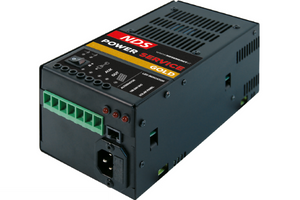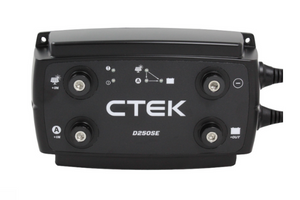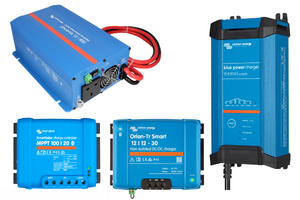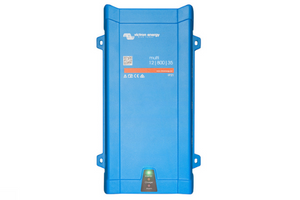Combined Chargers Vs Separate Chargers7 April 2022 | Paul In this article we'll be looking at combined DC-DC, Solar and Mains charging systems versus separate components. Both have advantages and disadvantages that need to be considered before determining which solution is best for your set-up and needs. Triple Charger SystemsTriple Chargers are single units with DC-DC, Mains & Solar charging all built-in, enabling you to charge from the alternator, shore/hook-up power or solar panels. These units have become very popular where space is tight and you want to keep wiring to a minimum as you will only need one set of cables from the battery to the unit for all three types of charging. The downside to this, however, is that if one component fails you may need to replace the whole unit. Another downside is that they are inflexible in terms of sizing each charging source to your requirements. The manufacturer has to design the triple charger to suit a 'typical' system, but two systems are rarely the same so you might, for example, find that the outputs of the DC-DC charger and mains charger are about right for your battery size, but that you need much more solar capacity than the controller allows for. You may find you need to accept a compromise in one area if your system isn't the 'typical' one the manufacturer has deigned the charger for. The key things to take into consideration when looking at Triple Chargers for your build are:
DC-DC Chargers + Solar ControllersDC-DC + Solar Controller chargers are similar to the Triple Chargers but do not have mains charging capability. Again, these combined units enable you to save on space and cable required for your project but suffer similar limitations as per Triple Chargers. Making sure that the solar charging capacity (as well as VOC tolerance) and charging output match your intended setup are the key things to watch out for with these units. Separate Systems
Of course, all three charging systems can be purchased separately which can allow you to pick and choose each unit so that it best meets the needs of your setup. You can mix and match components by selecting a solar controller that has sufficient capacity for your intended array and mains/DC-DC chargers that have an output that's optimised for your battery type and capacity. With separate components you also have the opportunity to select models with features you want (i.e. Bluetooth communication, trickle charger features, etc), which might not necessarily be available on a Triple Charger. These systems, however, take up a lot more space which can be difficult to fit in smaller areas, and you will need significantly more cabling and fusing for the installation. It can also prove tricky to fault find should an issue develop, as you need to take into account all three systems when you look into the cause. Key things to take into consideration with a separate system:
Inverter ChargersCombined Inverter/chargers are increasingly popular as a space-saving solution where your system needs a mains charger and an inverter, and can even help reduce costs in some cases. Most Inverter/chargers can detect whether you're on mains shore power or off-grid, and will automatically and seamlessly switch between supplying mains power from the shore supply or from your battery (via the inverter), without interrupting the 240V device being powered. Although this reduces the number of cables required, because the same set is used for the charger and the inverter to the battery, you will need to ensure you use large enough gauge cable to cope with the power requirements of the inverter when off-grid. As with Triple Chargers, these units are designed for a 'typical' system, so you might find you need to compromise on either the charger or the inverter output. For example, you might ideally need a 20A battery charger and a 1200W inverter, but you might only be able to get a 20A charger with a 500W inverter, or a 1200W inverter with a 50A battery charger. Key things to watch with Inverter/chargers
So, if you're trying to decide between a combined unit or separate components we hope this article has helped, but if you have any questions please don't hesitate to get in touch. Disclaimer The information contained in this article is provided in good faith and we do our best to ensure that it is accurate and up to date, however, we cannot be held responsible for any damage or loss arising from the use or mis-use of this information or from any errors or omissions. The installer is ultimately responsible for the safety of the system so if you are in any doubt, please consult a qualified electrician. |
|
12 Volt PlanetAuto & Marine Electrical Components |












